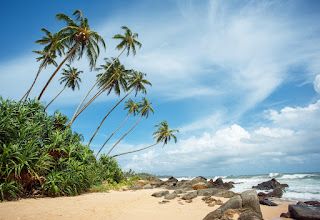Explore Sigiriya The Eighth Wonder of the World
Explore Sigiriya The Eighth Wonder of the World
Sigiriya Rock, Declared a UNESCO World Heritage Site in 1982, the ancient citadel of Sigiriya sits atop a giant granite rock rising 200 m above the surrounding countryside. There are conflicting theories about the history of Sigiriya, but according to the Mahavamsa King Kassapa killed his father, King Dhatusena, in AD 477 to inherit the throne. Fearing retribution from his half-brother, Mogallana, Kassapa built an impregnable palace-fortress on the summit of the rock between AD 477 and 485. The site is thought to have been occupied for millennia, but much of what can be seen here today is attributed to the time of King Kassapa. The ruins were first discovered by British archaeologists in the early 20th century, and excavations have continued here ever since.
Explore Sigiriya The Eighth Wonder of the World
The Royal Gardens
These landscaped gardens are divided into water, boulder and terrace gardens. The water gardens on the way to the rock from an avenue, with brick-lined pools and islands with ruined pavilions on either side. Beyond these lie the boulder and terrace gardens at the base of the rock.The Lion Platform
This terrace on the northern side of the rock marks the final steep ascent to the summit. At one time, a colossal brick lion guarded the stairway leading to the top of the rock. The lion’s massive paws are all that remain of the structure, but even these are impressive.The Mirror Wall
This wall was originally coated with a natural concoction of lime, egg white and honey, which lend it a brilliant shine; some sections look highly polished even today. This wall is covered with graffiti- often in verses – by visitors between the 7th and 13th centuries on their impressions of Sigiriya and the frescoes here. Translations of these can be seen in the Sigiriya Museum.The Summit
Nearly 2 ha in extent, the summit was once covered with buildings .today, only the foundations can be seen. The main attraction here are the spectacular views over the water gardens and beyond.Sigiriya Frescoes
One of the highlights of a visit to Sigiriya Rock are the beautiful frescoes that can be seen in a sheltered gallery in the western rock face. Of the estimated original of 500 frescoes, only 200 remain today. Dating from around the 5th century, the paintings were initially thought to depict Kassapa’s concubines but are now believed to be portraits of apsaras (celestial nymphs) with their attendants. However, a theory suggested by Dr Raja de Silva claims that these are actually depictions of the Mahayana goddess, Tara. Among the island’s most iconic images, the frescoes have been likened in style to those in the Ajanta Caves in southwestern India. Despite their antiquity, the paintings remain remarkably well preserved, in part because of the protection afforded by the stone ledge.Explore Sigiriya The Eighth Wonder of the World
Visit our website for more details
www.srilankaprivatetourswithdriver.com



Comments
Post a Comment